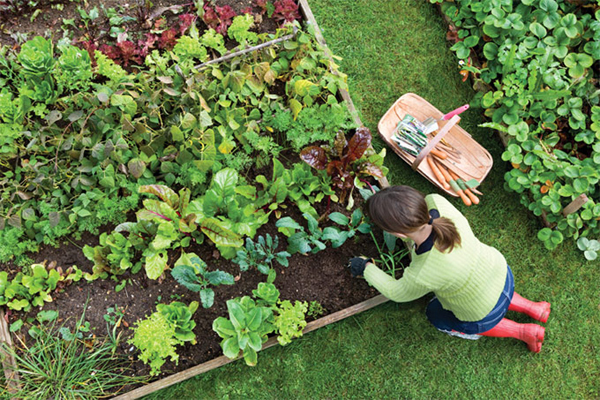



|
Tweet
Pin
It
|
Horticulture is more or less a smaller version of agriculture. While agriculture deals with cultivation on a large scale, Horticulture is gardening done on a smaller scale. The name 'Horticulture' is derived from the Latin terms 'hortus' (garden) and 'cultura' (cultivation) which means garden cultivation. Horticulture is the Science and art of gardening which is associated with the cultivation of fruits, vegetables, flowers, spices, ornamental plants, plantation crops, tuber crops, medicinal and aromatic plants. Plants play a major role in everyday life, from the fruit and vegetables we eat, to the trees that make our parks and streets beautiful, through to flowers that brighten up our gardens and homes. Therefore, Horticulture the study of the cultivation of plants is of great importance in an agrarian economy like India. Horticulture is an applied science, relying upon many other disciplines such as chemistry, physics, engineering, art, meteorology, economics, entomology, botany and many more. Horticulturist uses the basic information and theories of these related fields and tries to find an application for these ideas for the benefit of people and the environment.
The field of horticulture not only involves knowledge or beautification of surroundings, but also the study of plants and their significance. Horticulture deals with plant propagation and cultivation, crop production, preparation of soil, plant breeding and genetic engineering, plant biochemistry and plant physiology. This branch of agriculture supplies food products to man, feed to animals and many raw materials of plant origin to numerous industries (food, mixed-feed, textile, pharmaceutical, and perfume industries). Hence, Horticulture is closely associated with animal husbandry. It includes vegetable growing, fruit growing, viticulture (science of grape growing), meadow management, forestry and floriculture. Food production is the largest and fastest growing area of horticulture.
Horticulture is the best choice for those who love outdoors and greenery. Horticulture industry encompasses various fields such as fruit and vegetable industry, spice industry, floriculture industry, gardening and nursery industry, and other related fields such as landscaping. Horticulturists work and conduct research in various areas of horticulture, to improve crop yield, quality, nutritional value, and resistance to insects, diseases, and environmental stresses. Now Horticulture has entered the field of medicine also by the name Horticulture Therapy. It is the practice of engaging people in various therapeutic horticultural practices for the improvement of their mental and physical well being. Horticultural Therapists use horticultural activities and environments to positively influence human well-being, emotions, health and behaviour.
Horticulture involves five major branches of study. These branches are floriculture, landscaping, olericulture, pomology and postharvest physiology. Floriculture is the study of growing and marketing flowers and foliage plants, persons working in this field are called floriculturists. Landscaping include design, construction and maintenance of landscapes. Olericulture is the study of the production and marketing of vegetables. Those who work in this field are called olericulturists. The study of the production and marketing of fruits is called pomology and those who work in this field are called pomologists. Postharvest physiology include areas of maintaining quality and preventing spoilage of horticultural crops.
Tags
agricultural science career
,
plant science career
,
environmental career
Find it Useful ? Help Others by Sharing Online
Comments and Discussions |
Related
Career Options
|
|||
|
|